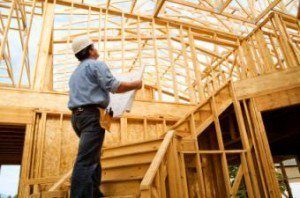 A slowdown in housing completions could be a sign of a corresponding slowdown in immediate housing supply relief.
A slowdown in housing completions could be a sign of a corresponding slowdown in immediate housing supply relief.
At least that's how First American Chief Economist Mark Fleming sees it from what the newest U.S. Census numbers say. November's New Residential Construction Report finds completions down almost 4 percent from a year ago, even as the number of housing units under construction grew by that very amount. At the same time, the number of housing units authorized to be built jumped by 16.4 percent.
Last month's 1.256 million single residential starts nationally was an uptick of 3.2 percent from October, but 3.6 percent lower than a year ago. Family starts totaled 824,000, which is 4.6 percent lower than in October.
Starts were down double digits in the Midwest and West, but way up in the Northeast. The Northeast saw 124,000 starts last month, the most since January. That's 38 percent above October and 33 percent above November 2017. The South also saw a 15 percent increase in starts from October and was up 1.3 percent from last year.
“Looking ahead to 2019,” Fleming said, “single-family homebuilding will need to increase to keep pace with rising demand from the largest generation, millennials, as they enter their prime home-buying years.” But Fleming is optimistic.
“Despite underwhelming housing starts data in the past two months, there are nevertheless reasons to feel cheerful about homebuilding in 2018,” he said. “We saw particularly strong growth in multi-family starts.”
In fact, there were 417,000 starts for properties of five or more units in November—a 25 percent uptick from October and a 20 percent bump from a year earlier.
Danielle Hale, Chief Economist at Realtor.com, is a little less rosy about what's ahead, at least in the single-unit sector. Hale said the downswing in permits and completions stems from a spike in mortgage rates in early November that undermined buyer purchasing power and caused a dip in builder confidence.
“As long as builders remain concerned about buyer demand, single-family starts are likely to decline as builders adjust production accordingly,” she said. “Rising home prices and mortgage rates have created high hurdles for homebuyers, while cost increases have made it difficult for builders to deliver homes at the most in-demand price points.”
Hale added that recent easing in mortgage rates could help some buyers find homes to purchase.
“But in most markets, we’ll continue to see stalemate between buyers and sellers, with fewer transactions than we saw a year ago,” she said.

 theMReport.com Your trusted source for mortgage banking news
theMReport.com Your trusted source for mortgage banking news








